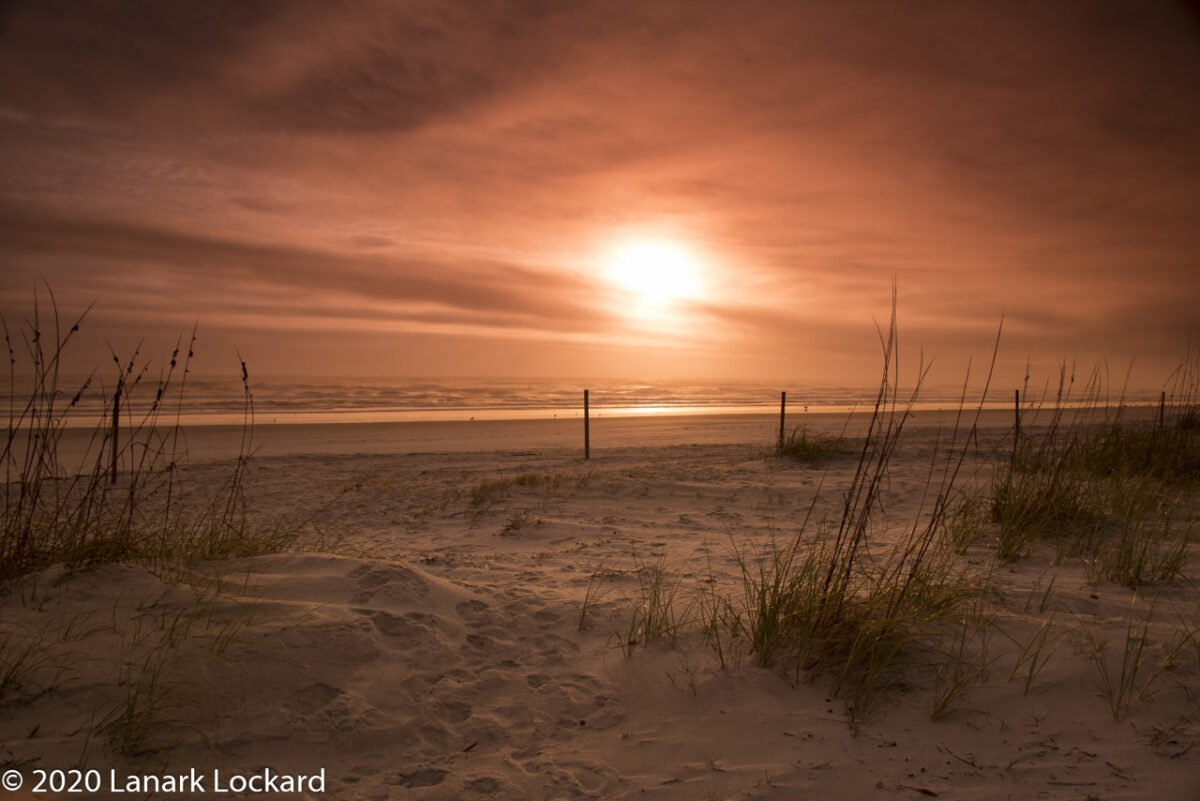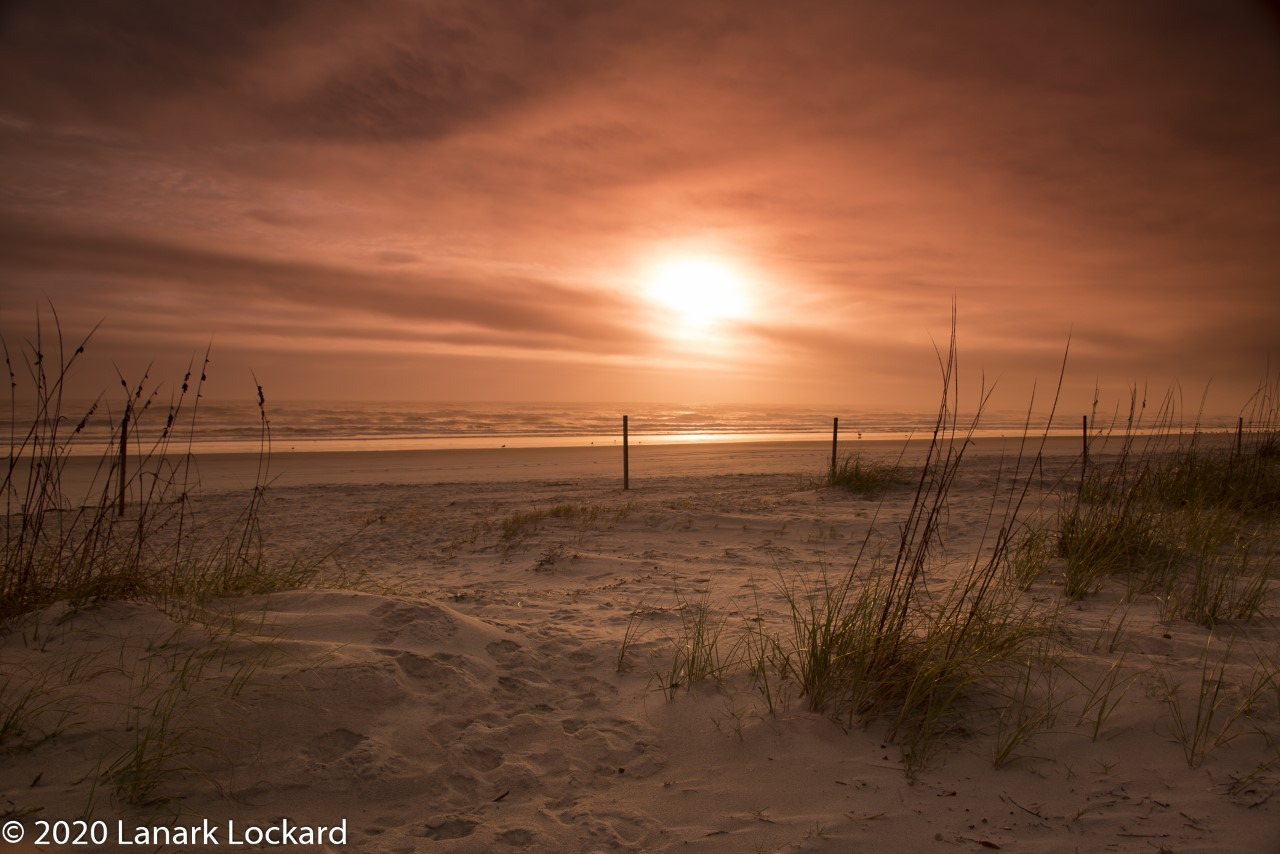In mid-February 2020, my good friend and photography mentor, George Wilson and I departed in the darkness of the early morning for the drive from Orlando, FL to Smyrna Dunes Park, several miles north of the Kennedy Space Center. Our goal was to catch the sunrise over the Atlantic Ocean before walking north along the boardwalk towards Ponce de Leon Inlet to photograph the sand dunes. We arrived at the entrance gate just as it was opening, and the Ranger gave us a broad smile as she announced we were the first to arrive. It was still about 15-20 minutes before the official sunrise. After paying the entrance fee, we had a short ride to the parking lot, where we grabbed our gear for the walk to the beach.
Coming up over the dunes, the sun was still below the horizon, but the light peaking over the horizon provided the general location where it would make its appearance. For sunrise photography, the first key element is being in position before the event. “You can be 30 minutes early, but never 1 minute late”. A light fog was hugging close to the surface of the ocean, and the sky above was mostly cloudy. I immediately began my pre-shooting routine to compose my desired shot. I chose a location just oceanside of the primary sand dunes, with sea oats framing the lower portion of the frame to the left and right of the anticipated sun location. Turtle nesting signposts were evenly spaced just above the hightide mark in the sand and the shoreline angled slightly away to the right of the frame. The sea oats and signposts provided a bit of foreground interest, and the diagonal composition of the shoreline is intended to catch viewer’s eye. Such lines add energy to an image and impact the viewer’s emotion. Diagonal lines often awake feelings of unrest, anxiety, impatience. In this case, I was seeking the anticipation of a new day.
The light conditions change quickly around sunrise and sunset, so, in order to simplify the camera variables, the focus was manually set for the wind-blown footprints on the sand dune, so that the sand textures, and the sea oats would all remain in focus throughout the shoot. The White Balance was set to 7800 K (shade). This told the camera that I was working with a scene that had a more bluish tone to the light. The computer inside the camera added red to offset the blue and achieve a neutral white balance. This is a great way of emphasizing the color of sunrise or sunset photographs.
A Singh-Ray Darryl Benson Reverse ND-3 Stop filter was utilized to balance the light between the sky and the beach foreground by “holding back” the bright area of the sun near the horizon. After a few exposures, George offered the use of his Singh-Ray Gold-N-Blue polarizing filter. Normally, this filter is used to enhance the blue sky, but in this shot, the gold portion of the filter was used over the sky and the blue portion over the beach. The shutter speed was slowed to adjust the exposure for the addition of the Gold-N-Blue filter, the result was enhanced color of the sky and a better definition of the clouds.
Combining the white balance adjustment and two of Singh-Ray’s filters I was able to capture what I envisioned and give the viewer the same experience I had that early morning on the beach.
I have borrowed a Singh-Ray Gold-N-Blue Polarizing filter on a several of my photography trips/outings and was so impressed by its versatility and quality that I have purchased one to add to my inventory of other filters from Singh-Ray.


